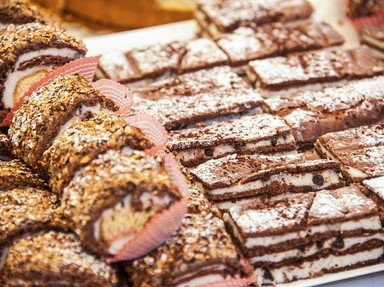Quiz Answer Key and Fun Facts
1. The Italian treat of struffoli is a mound of fried dough balls traditionally flavoured with which sweet substance?
2. Hailing from the Campania region in Italy, which delicate-looking pastry is quite similar to, and sometimes called "lobster tail" in the US?
3. Tiramisu is one of Italy's most famous desserts. What kind of cheese is used to give it its signature creamy texture?
4. Cannoli is derived from an Italian word for little tube. These tubes are filled with sweet fillings such as ricotta, fruits, spices and nuts. What is the tube made from?
5. Which of the following ingredients is NOT usually included in preparation of panna cotta?
6. Cantucci, from the old Italian word meaning "little place", is the original name for which hard, almond-flavoured biscuit?
7. Which Milanese sweet bread dessert, studded with dried fruit, is generally eaten at Christmas time?
8. What delicious Italian dessert is a ball of gelato with a hidden center?
9. A Zeppole is an Italian dessert that is similar to what popular bakery item?
10. Which of the following is most traditionally added to flavor zabaglione?
Source: Author
leith90
This quiz was reviewed by FunTrivia editor
Bruyere before going online.
Any errors found in FunTrivia content are routinely corrected through our feedback system.

